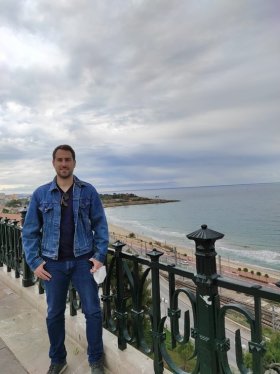Charalampos Papadakis


PhD Programme: Economics and Business
Research group: ECO-SOS – Research Centre on Economics and Sustainability
Supervisors: Nektarios Aslanidis & Yuliya Lovcha
Bio
Charalampos Papadakis holds a Bachelor's degree in Mathematics, obtained at the University of Crete in 2016, and a Master's degree in Accounting and Auditing, obtained at the University of Macedonia and the Hellenic Mediterranean University of Crete in 2019. His MA thesis' project focused on Financial Risk Management. During his postgraduate, he worked as Insurance Consultant at the Interamerican Part of ACHMEA. He is now enrolled in the programme titled “Financial Integration in Europe during the 19th-20th Centuries”, under the supervision of Professors Nektarios Aslanidis and Yuliya Lovcha. He is also member of the URV Research Centre on Economics and Sustainability (ECO-SOS).
Project: Financial Integration in Europe during the 19th-20th Centuries
International financial markets are highly interconnected, and financial crises and economic downturns can easily spread across economies. Therefore, measuring the financial and macroeconomic links across international markets is a major concern for policy-markers and researchers. From the large academic literature on the nineteenth/twentieth century commodity market integration, we have a good knowledge of real/macroeconomic inter-relations especially for Europe and North America. Yet, little is know about the financial market linkages. The aim of the current project is to measure financial comovements and spillover effects among the European markets and those between the European and world markets. To that end, we plan to provide a systematic and finely detailed quantitative assessment of the evolution of these financial links over a long time span covering almost two centuries of data. In this setting, an interesting hypothesis to test is how strong were the links in the local European markets during the long nineteenth century and how this affected their integration in the twentieth century. The final aim of the project to analyse European financial comovements and spillovers in a global perspective and in relation to North America, Asia, Latin America and Middle East, answering the question of whether and when international European financial linkages strengthened. Using a long time span features several episodes of economic and financial integration and disintegration, business cycle recessions, financial market crises and political crises (e.g., the Gold Standard period, the Great Depression, the Interwar years, World War II, the European Integration and the European Union, the Bretton Woods System, the Oil crises of the 1970s, and more recently the Great Moderation). The project adopts several useful econometric techniques such as regime-switching models (threshold, Markov-switching), structural break methods, common factor models, fractional integration, vector autoregressions (VAR models) and the Diebold-Yilmaz financial connectedness methods. We will also pay a special attention to identification of financial market-specific shocks to analyse a propagation of information from one market to the others.
International secondment
- Université de Genève, Switzerland. 4 months (2022).
News
- Diari Digital de la URV. Interview: Having a deep understanding of economic events in different historical periods is crucial to be able to predict future crises



